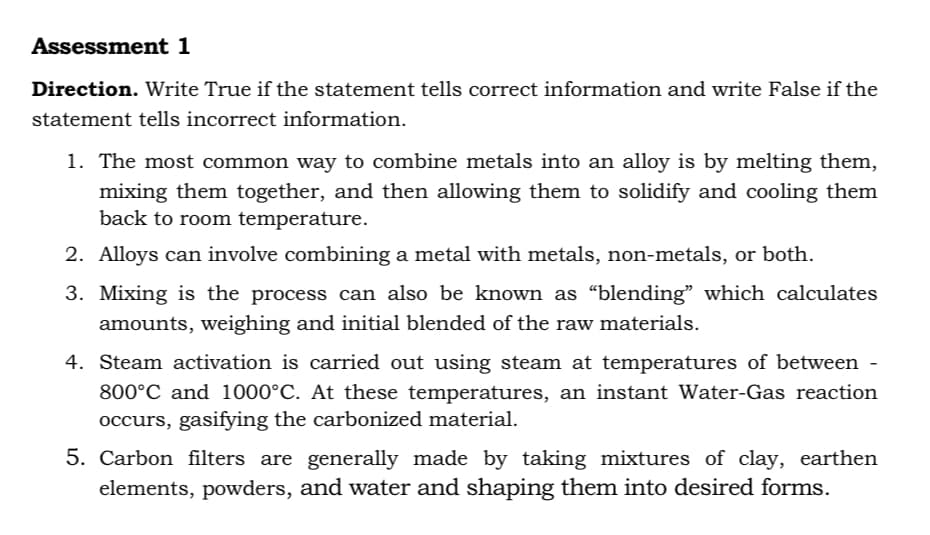Assessment 1 Direction. Write True if the statement tells correct information and write False if the statement tells incorrect information. 1. The most common way to combine metals into an alloy is by melting them, mixing them together, and then allowing them to solidify and cooling them back to room temperature. 2. Alloys can involve combining a metal with metals, non-metals, or both. 3. Mixing is the process can also be known as "blending" which calculates amounts, weighing and initial blended of the raw materials. 4. Steam activation is carried out using steam at temperatures of between - 800°C and 1000°C. At these temperatures, an instant Water-Gas reaction occurs, gasifying the carbonized material. 5. Carbon filters are generally made by taking mixtures of clay, earthen elements, powders, and water and shaping them into desired forms.
States of Matter
The substance that constitutes everything in the universe is known as matter. Matter comprises atoms which in turn are composed of electrons, protons, and neutrons. Different atoms combine together to give rise to molecules that act as a foundation for all kinds of substances. There are five states of matter based on their energies of attraction, namely solid, liquid, gases, plasma, and BEC (Bose-Einstein condensates).
Chemical Reactions and Equations
When a chemical species is transformed into another chemical species it is said to have undergone a chemical reaction. It consists of breaking existing bonds and forming new bonds by changing the position of electrons. These reactions are best explained using a chemical equation.
Subpart 1-3 this is not a graded question.

Step by step
Solved in 2 steps









